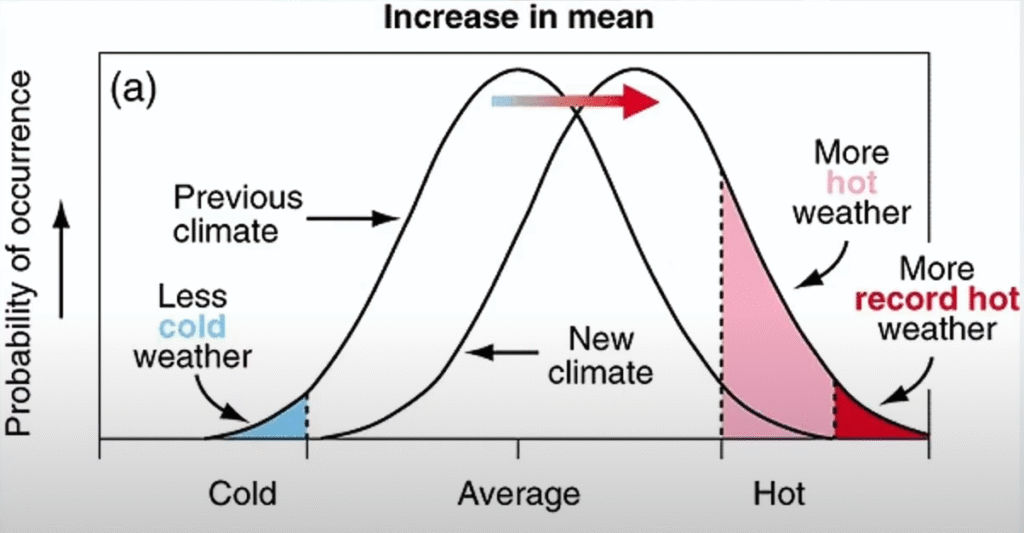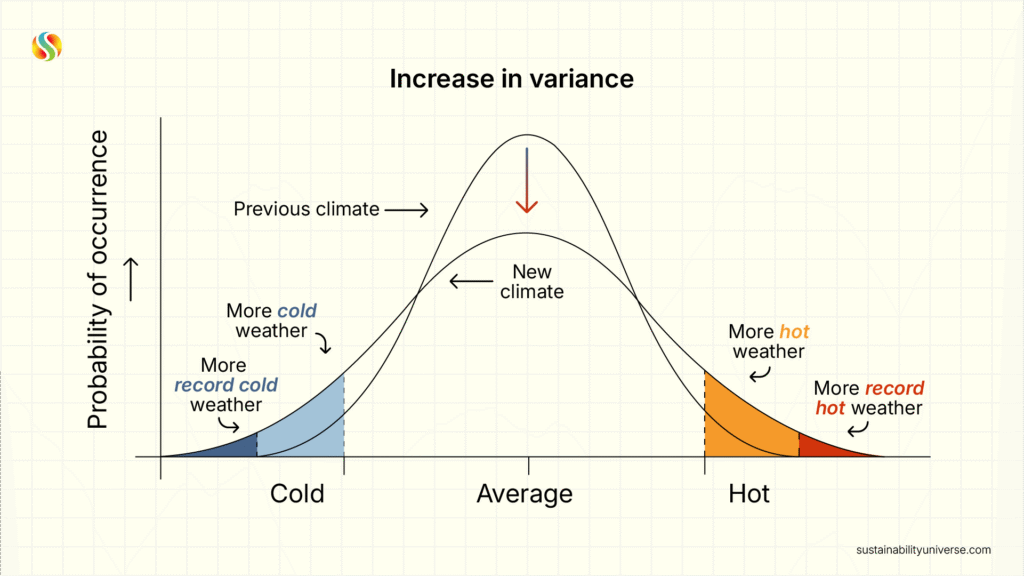While trying to iscussing the climate system, it is pertinent to understand the difference between weather and climate. Although the words sound similar, there is a clear difference from the perspective of space and time.

Weather reflects the state of the atmosphere at a particular time and place; it is the daily or short-term variation of conditions in the lower atmosphere—such as temperature, pressure, wind, rainfall, or other meteorological parameters. Weather comprises the day-to-day conditions of the atmosphere at any place, is never static, and thus cannot be generalized.
On the other hand, climate is a statistical measure f the state of the atmosphere in terms of meteorological variables like temperature, rainfall, atmospheric pressure, and humidity for a particular region, typically calculated over periods of 30 years or more. Climate can fluctuate on short time scales, producing phenomena like hydrological or agricultural drought, and much longer time scales, giving rise to glacial epochs.
Climate Change
Climate change is defined as a variation in either the mean state or in the variability of climate that persists for an extended period—typically decades or longer.
It includes temperature increases, changes in precipitation patterns, sea level rise, and increases in the frequency of extreme climate events. All of these are part and parcel of the climate change concept. Global warming refers specifically to the increase in Earth’s average surface temperature. The United Nations Framework Convention on Climate Change (UNFCCC) defines climate change as a change in the state of the climate that can be identified by statistical tests showing changes in mean or variability, persisting for decades or longer.
Climate Variability
A related concept, climate variability, refers to sudden and discontinuous seasonal or monthly changes in climatic components without a specific trend. UNFCCC defines climate variability as variations in the mean state and other statistics of the climate on all spatial and temporal scales beyond individual weather events.
Understanding Climate Change and Climate Variability (with Data)
Climate variability refers to the periodic or irregular seasonal, annual, or decadal changes in climatic components (such as temperature and precipitation) that do not follow a long-term trend of change—this is climate variability.
Both concepts, climate variability and climate change go hand in hand. The United Nations Framework Convention on Climate Change (UNFCCC) defines climate variability as variations in the mean state and other statistics of climate (including standard deviation and the occurrence of extremes) on all spatial and temporal scales beyond that of individual weather events. This is about the climate variability concept.
To understand climate change and climate variability, let us consider a time-series dataset of a meteorological parameter—most commonly, temperature. A series is said to be stationary if the average values for shorter periods are effectively the same. Such meteorological parameters fluctuate from one observation to another, and this fluctuation about the mean is the measure of climate variability. Temperature is a popular metric for analysis.
For any temperature record that is stationary, the distribution forms a bell-shaped curve, called a normal or Gaussian distribution. The peak represents the mean, and the width represents the variance.


Referring to above image, when the mean temperature shifts to the right (global warming), the number of hot days increases and cold days decrease—this marks rising global average temperature and increased frequency of extreme heat events, as observed in recent decades.


Referring to above image, if the variance of the distribution increases (curve gets wider), this signals higher variability—leading to more extremes both hot and cold.


If both mean and variance rise (curve shifts and stretches), the frequency and intensity of extreme weather events (especially hot events) rise further.
So, the significance of climate change and climate variability is that both are critical in determining the frequency and intensity of extreme events. Not only climate change (the shift in average) but also variability (the spread around the average) leads to increases in events like heavy precipitation, droughts, or floods, which are rising year after year due to changes in the climate system.
Remember, as variance rises, so does the occurrence of both hot and cold extremes. More extreme events occur due to rising climate variability. If both mean and variance rise, hot extreme events dominate and increase in frequency.